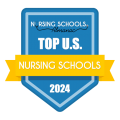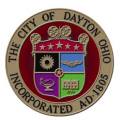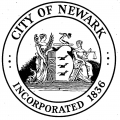For our 2024 rankings, the research team at Nursing Schools Almanac collected data on nearly 3,000 nursing schools and campuses throughout the United States. We evaluated each school on three dimensions:
Search for nursing schools and programs in your state:
Youngstown has a thriving local nursing profession. The city’s major nursing employers include Mercy Health, Akron Children’s Hospital, and the state of Ohio. These healthcare providers employ three primary nursing roles: registered nurse (RN), licensed practical nurse (LPN), and certified nursing assistant (CNA).
The nursing profession in Toledo, Ohio, offers several distinct points of entry. Each nursing role carries a unique set of responsibilities, educational requirements, and compensation.
Registered nurse (RN)
The Dayton metropolitan area is home to over a dozen accredited nursing schools, including a mix of both public and private institutions. These schools offer nursing programs that prepare students for three primary nursing roles: registered nurse (RN), licensed practical nurse (LPN), and certified nursing assistant (CNA).
One of the most common education paths to a career in nursing is a licensed practical nursing (LPN) program. These programs are often affordable and they provide the educational background students need for the best career opportunities, career advancement, and further study.
Licensed practical nursing
If you’re looking for a fulfilling and challenging career, you might consider the nursing field. The three primary nursing roles – certified nursing assistant (CNA), licensed practical nurse (LPN), and registered nurse (RN) – all entail caring for patients in times of acute need.
The Newark metropolitan area is home to more than 30,000 nursing staff. What exactly do they do? The vast majority of Newark’s nurses fill one of three critical nursing roles.
Certified nursing assistant (CNA)
Nursing assistants help patients with daily living tasks and bedside care in a variety of settings, from hospitals to home care. New Jersey’s aspiring CNAs must compete a brief certificate program and pass a state-administered examination before practicing.
Licensed practical nurse (LPN)
Each aspiring nurse must choose which nursing position is the best fit for her career aspirations. Broadly speaking, nurses can pursue one of three roles: certified nursing assistant (CNA), licensed practical nurse (LPN), or registered nurse (RN). Each role carries a unique job scope and requires a significantly different investment in one’s education.
Certified nursing assistant
A master of science in nursing (MSN) degree program enables its students to prepare for advanced career tracks like nursing administration, nursing education, and family practice nursing. New Hampshire is home to two distinct types of MSN programs. The majority of master’s degree programs prepare existing registered nurses (RNs) to seek licensure as advanced practice registered nurses (APRNs), with specialized roles like nurse practitioner, nurse midwife, and nurse anesthetist.
New Hampshire’s healthcare industry is experiencing rapid growth, and registered nurses (RNs) sit at the forefront of this change. As U.S. healthcare evolves and grows in complexity, providers are increasingly seeking RNs with at least a bachelor of science in nursing (BSN) degree. With over 12,000 RNs across the state, a BSN degree helps its holder stand out in a pool of applicants. A bachelor’s degree can also result in higher pay: while New Hampshire’s RNs earn about $63,000 on average, BSN-holders often earn top-quartile pay of $77,000 or more annually.
Aspiring registered nurses (RNs) in New Hampshire have three options for pursuing licensure: an associate’s degree in nursing (ADN), a bachelor of science in nursing (BSN), and a direct-entry master of science in nursing (MSN). The ADN pathway is by far the fastest and least costly option for becoming an RN.















